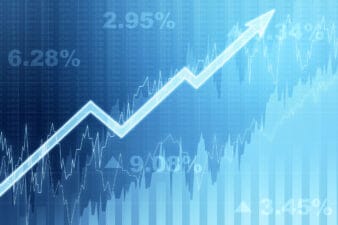Want to retire a millionaire? If you invest in blue-chip stocks and are willing to be patient, it’s not as hard as you might think, especially if you’re able to max out your Tax-Free Savings Account (TFSA) at $75,500. Below, I’ll show you how you can grow your TFSA to over $1 million just by slowly and steadily investing into a safe exchange-traded fund (ETF).
Why an ETF is the safest path to $1 million
Picking individual stocks may be fun, but it isn’t always easy, and even if you pick a winner, the others may not be. This is where an ETF can be your friend and make the process easy for you. Since it holds a basket of stocks, the burden of worrying about if you’ve got the right mix of investments is gone. All you need to do is to determine whether you want a broad ETF that covers the market or if you just want to invest in a particular sector.
My preference is to go with the NASDAQ. It’s a top index, and it has consistently outperformed both the Dow Jones and the TSX by wide margins. Here’s how it has done in the last 10 years:
^IXIC data by YCharts.
And to mirror the NASDAQ, a great option for that is BMO NASDAQ 100 Equity Hedged to CAD Index ETF. With many of the top tech companies in the fund, including Apple, Amazon, Microsoft, and Facebook, you’ll have exposure to some of the best growth stocks in the world. On average, the NASDAQ has risen by around 17.5% per year. Here’s a look at what a $75,500 investment in the NASDAQ 100 could look like if it grew at that rate:
| Year | Portfolio |
| 1 | $88,683.73 |
| 2 | $104,169.59 |
| 3 | $122,359.57 |
| 4 | $143,725.87 |
| 5 | $168,823.13 |
| 6 | $198,302.85 |
| 7 | $232,930.28 |
| 8 | $273,604.32 |
| 9 | $321,380.82 |
| 10 | $377,500.00 |
| 11 | $443,418.65 |
| 12 | $520,847.95 |
| 13 | $611,797.87 |
| 14 | $718,629.36 |
| 15 | $844,115.66 |
| 16 | $991,514.25 |
| 17 | $1,164,651.42 |
After just 17 years, your investment could grow to be worth more than $1 million. And if that you held that investment within your TFSA, that profit would be entirely tax-free. The important caveat to remember here is that double-digit returns are by no means a guarantee, and that would certainly be a best-case scenario. But odds are, betting on the NASDAQ will yield the best risk-adjusted results for your portfolio.
Bottom line
In this example, you need to max out your TFSA for this to work. While you can still earn a good return from the ETF, even if you don’t have a lot in savings, the more you have, the easier it’ll be to get to $1 million.
The important takeaway is that it’s important to build up your savings as much as you can. The best results you’ll get from compounding returns over the years will be much greater if you’ve got a good nest egg to work with. Investing a few thousand dollars can be a good start, but that should serve as a starting point with the ultimate goal being to maximize the TFSA. It’s not often the government gives you a way to earn tax-free income, and that’s why it’s important to take advantage of a TFSA as much as you can.
Even if you’re a new investor, ETFs can be a safe way to invest and get familiar with the process. And they make great buy-and-forget investments.








